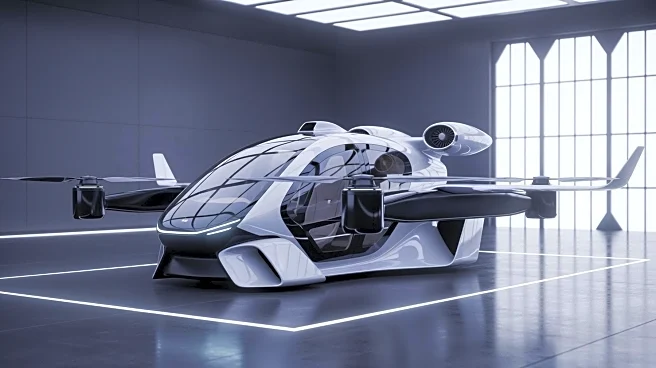What's Happening?
EHang has launched the VT35, a driverless flying taxi capable of traveling nearly 125 miles on a single battery charge. The VT35, unveiled in Hefei, Anhui Province, is the latest generation of EHang's
electric vertical take-off and landing (eVTOL) aircraft. It features autonomous flight systems, electric propulsion, and a compact airframe designed to enhance urban aerial travel efficiency. The VT35 addresses previous criticisms regarding electric fuel efficiency, offering improved range and speed. EHang's CEO, Huazhi Hu, emphasized the company's commitment to optimizing aircraft performance and expanding applications for safer, smarter, and more accessible low-altitude transportation solutions.
Why It's Important?
The introduction of the VT35 represents a significant step forward in urban aerial mobility, potentially revolutionizing how people travel within cities. By offering a longer range and efficient electric propulsion, the VT35 could make aerial taxis a viable option for intercity travel, reducing congestion and emissions. This development aligns with global trends towards sustainable transportation solutions, highlighting the potential for eVTOL technology to transform urban transit. The VT35's ability to land on rooftops and parking lots further enhances its utility, offering new possibilities for urban planning and infrastructure development.
What's Next?
EHang plans to conduct further testing and airworthiness evaluations to prepare the VT35 for commercial flights. As the vehicle undergoes these assessments, regulatory bodies will likely scrutinize its safety and operational capabilities, potentially influencing future standards for autonomous aerial vehicles. The global release of the VT35, priced at $913,600, may attract interest from urban planners and transportation companies looking to integrate eVTOL technology into their services. The success of the VT35 could spur further innovation in the sector, encouraging other companies to develop similar technologies.
Beyond the Headlines
The VT35's launch could have broader implications for urban development and transportation policy. As eVTOL technology becomes more prevalent, cities may need to adapt their infrastructure to accommodate aerial taxis, potentially leading to new zoning regulations and construction projects. The shift towards autonomous aerial vehicles may also raise ethical and legal questions regarding safety, privacy, and airspace management. Additionally, the integration of eVTOLs into public transportation systems could influence cultural perceptions of mobility, emphasizing convenience and sustainability.













